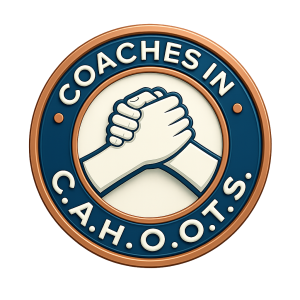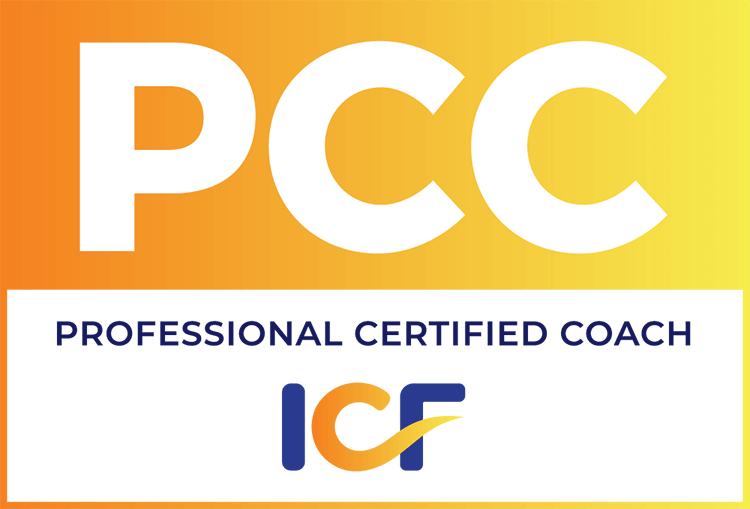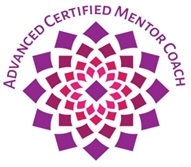I’ve been coaching for over fifteen years, and if I could go back and share one bit of wisdom with my younger self, it would be this: “Set better boundaries.”
Not sage advice on goal-setting. Not even recommendations for improving coaching skills. Nope, it would be all about boundaries.
When you start coaching: your natural desire to help can become your biggest professional pitfall. We’re wired to care deeply, give generously, and go that extra mile for our clients. It’s what makes us good coaches. But without clear boundaries, that same instinct will eventually drain your energy, hijack your time, and leave you feeling resentful toward the work you love so much.
Sound familiar?
Your clients are struggling with the exact same issue. Many of them come to coaching precisely because they’ve been saying yes when they desperately wanted to say no. They’re burned out from people-pleasing and are overwhelmed by commitments they never really wanted to make.
When you get serious about your own boundaries, something beautiful happens. You protect your own well-being, and you also become a living example of what healthy limits look like. Your clients see boundaries in action, and this can give them permission to create their own.
This article will help you build those boundaries for yourself so you can be a good role model for your clients.

What Boundaries Are And What They Aren’t
Let me clear up a huge misconception right away. Boundaries aren’t walls that shut people out completely.
Think of boundaries as the guidelines you choose to set about what’s okay and what’s not okay for others to do to you, with you, or around you. They protect your time, energy, and resources.
I love how one of my mentors puts it: “Boundaries aren’t selfish — they’re the guardrails that protect what matters most.” Selfishness says, “I don’t care about you.” Boundaries say, “I care about both of us.” There’s a world of difference.
Reflection Question
Where in your life do you need more clarity about what’s okay and what’s not okay for you?
Why Setting Boundaries Feels Like Swimming Upstream
If boundaries are so valuable, why do so many of us—both coaches and clients—struggle with them?
The answer usually goes back to our conditioning.
Many of us, especially women, grew up learning that being helpful meant always being available. Saying yes felt expected; saying no felt selfish or mean. Add in our fear of disappointing people or causing conflict, and voilà! You’ve got a recipe for chronically weak boundaries.
Another thing I’ve learned through years of working on this myself and with clients: guilt always shows up when you’re breaking old habits. It doesn’t necessarily mean you’re doing something wrong.
The ability to set healthy boundaries is a learned skill, not a personality trait. That means you can learn how to do it, practice it, and get stronger at it over time.
The Underestimated Power of “No”
“No” gets such a bad reputation. We think it’s harsh or unkind. But honestly, “no” might be the most protective word in the English language.
When you say no to requests that drain you, you’re automatically saying yes to what sustains you.
No protects your time, prevents overwhelm, and sets clear expectations with others. It frees up space for the things that truly matter to you.
It can be really helpful to start small with your nos. Skip one social event when you need rest. Decline one extra project when your plate is already full. These low-stakes practices build confidence for the bigger, scarier boundaries later.
Reflection Question
What’s one small request you could say no to this week without (too much) guilt? Start there.
Five Things I Wish Every Coach Knew About Boundaries
Over the years, I’ve noticed five foundational principles that make all the difference:
•Boundaries are about making an intentional choice. You get to decide how to use your time and energy.
•Boundaries require clarity. You can’t protect something you haven’t clearly defined for yourself.
•Boundaries build respect. When you honor your own limits, other people learn to honor them too.
•Boundaries evolve. As your life changes, your boundaries will shift. That’s not inconsistency—that’s growth and wisdom.
How to Actually Set Boundaries (The Practical Stuff)
Start by Defining Your Non-Negotiables
Try completing these sentences:
• People may not… (yell at me, dictate how I use my time, expect instant responses to non-urgent requests)
• I have a right to ask for… (honesty, quiet time, clear communication, advance notice)
• To protect my time and energy, it’s okay to… (let calls go to voicemail, decline without a detailed explanation, take breaks when I need them)
When you write these down, you create your own personalized map of where stronger boundaries are needed.
Keep Some Go-To Scripts Ready
One reason people avoid setting boundaries is they don’t know what to say. Here are some phrases that work beautifully:
•”Thank you, but I already have plans.” (Your plan might be rest—that counts!)
•”I need to check my schedule and get back to you.”
•”I’m not available for that, but here’s what I can offer instead.”
Buy Yourself Time
Instead of giving an automatic yes, try this:
“Let me think about that and I’ll get back to you.”
That pause creates space for you to make a thoughtful decision instead of a reactive one.
Practice with Small Stakes First
Boundaries get easier with repetition. Start with situations where the consequences are low, then work your way up to the relationships and requests that feel scarier.
Reflection question
Which area of your life feels most ready for a new boundary right now—your schedule, your relationships, or your work? Start there.
How to Hold the Line (When It Gets Uncomfortable)
Setting a boundary is one thing. Maintaining it when people push back is quite another matter.
First, expect some guilt when you start holding firmer boundaries. That guilt usually means you’re breaking an old people-pleasing habit, not that you’re doing something wrong. Remember the airplane safety demonstration—you have to put on your own oxygen mask before you can help anyone else.
Here’s something that may take some time to accept and embrace: you are not responsible for someone else’s disappointment unless you intended to cause harm. Their feelings are valid, but they’re not your responsibility to manage.
Most importantly, follow through. A boundary you don’t enforce becomes just a suggestion.
Reflection question
What emotions come up for you when you think about holding a firm boundary? Notice them without judgment—they’re giving you information about old patterns that need updating.
When People Test Your Boundaries (And They Will)
Not everyone will celebrate your new boundaries. Some people will test them repeatedly, hoping you’ll cave. Expect guilt-tripping, manipulation, or “just this once” requests.
Here’s a simple three-step approach:
1. Inform: State your boundary clearly and calmly.
2. Warn: When a boundary is crossed, remind the offender of the consequence of continuing to ignore the boundary. This must be a consequence you are willing to implement.
3. Follow through: You must be consistent, even when it feels uncomfortable.
Reflection question
Which of these steps do you personally find to be the most challenging? What will help you improve?
Professional Boundaries for Coaches
As coaches, our boundaries aren’t just personal—they’re professional responsibilities.
•Time boundaries: Start and end sessions on schedule. This models respect for time and teaches clients that boundaries aren’t flexible just because someone wants them to be.
•Availability boundaries: Be crystal clear about how clients can reach you between sessions.
•Role boundaries: Coaching isn’t therapy, consulting, or friendship. When clients try to pull you into other roles, gently redirect them back to the coaching relationship.
•Responsibility boundaries: Your clients are accountable for their own progress. You support and collaborate, but you don’t carry them.
When coaches model healthy boundaries, clients see what respect looks like in action.
Reflection question
Take an honest look at your coaching practice. Which agreements feel strong, and where are you giving away too much?
Helping Your Clients Build Their Own Boundaries
Once you’ve strengthened your own boundary muscles, you’ll be amazed at how effectively you can help clients develop theirs.
I like to ask questions that create awareness:
“What does saying yes to this request cost you in terms of time, energy, or other priorities?” or “What makes saying no feel so uncomfortable in this situation?”
I always encourage clients to start with small experiments—What would it be like for them to try one new boundary this week and see what happens? Each small success builds confidence for the next challenge.
Advanced Boundary Strategies for Coaches
To keep your own boundaries healthy over the long term:
1. Audit your daily habits for what I call “boundary leaks”—those small ways you over-give or make yourself too available. Maybe it’s answering emails outside business hours or staying late because you didn’t want to disappoint someone.
2. Put your policies in writing. Clear written policies about cancellations, payments, and session times eliminate confusion and give you something to point to when boundaries are tested.
3. Use technology to reinforce your availability. Scheduling apps, auto-responders, and “do not disturb” settings can maintain boundaries even when your people-pleasing instincts kick in.
4. Reflect regularly. I ask myself regularly: Where am I holding strong boundaries? Where am I starting to bend? This can prevent small boundary erosions from becoming big problems.
The Freedom That Comes with Boundaries
Here’s what I’ve discovered after years of working on this: boundaries don’t create walls—they create freedom.
Boundaries protect your energy so you can show up fully for what matters most. They strengthen your relationships by creating clear expectations. They give you space to serve your clients from a place of choice rather than obligation.
As a coach, healthy boundaries mean you serve from strength instead of depletion. And when you model this for your clients, you give them permission to do the same.
That’s one of the most valuable gifts you can offer—showing someone what it looks like to protect what matters most to them.
If you’re ready to stop struggling with boundaries and start holding them with confidence—both for yourself and your clients—I’d love to talk with you. Book a discovery call with me, and we’ll explore how you can create boundaries that protect your energy, strengthen your coaching practice, and inspire your clients to build their own.



